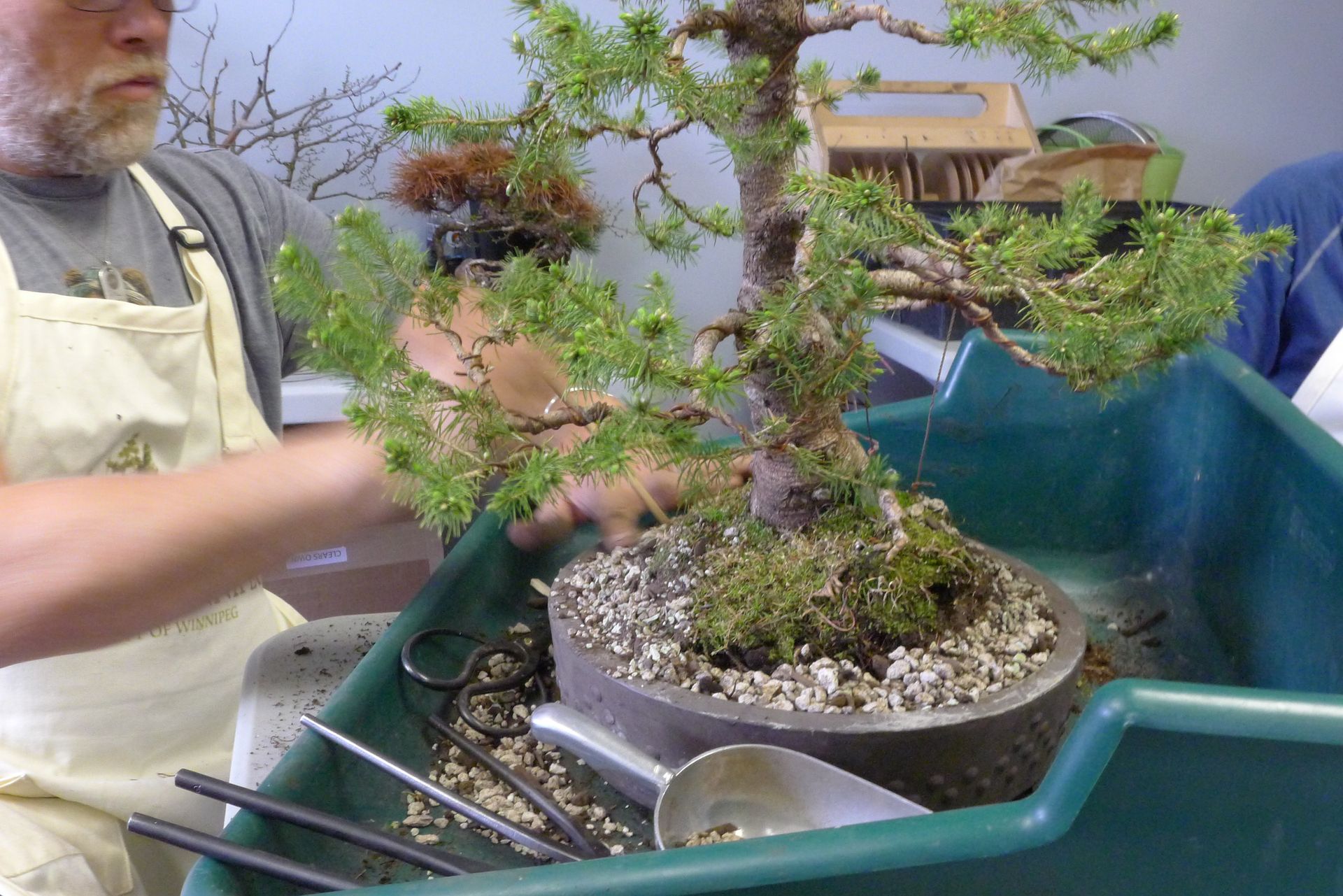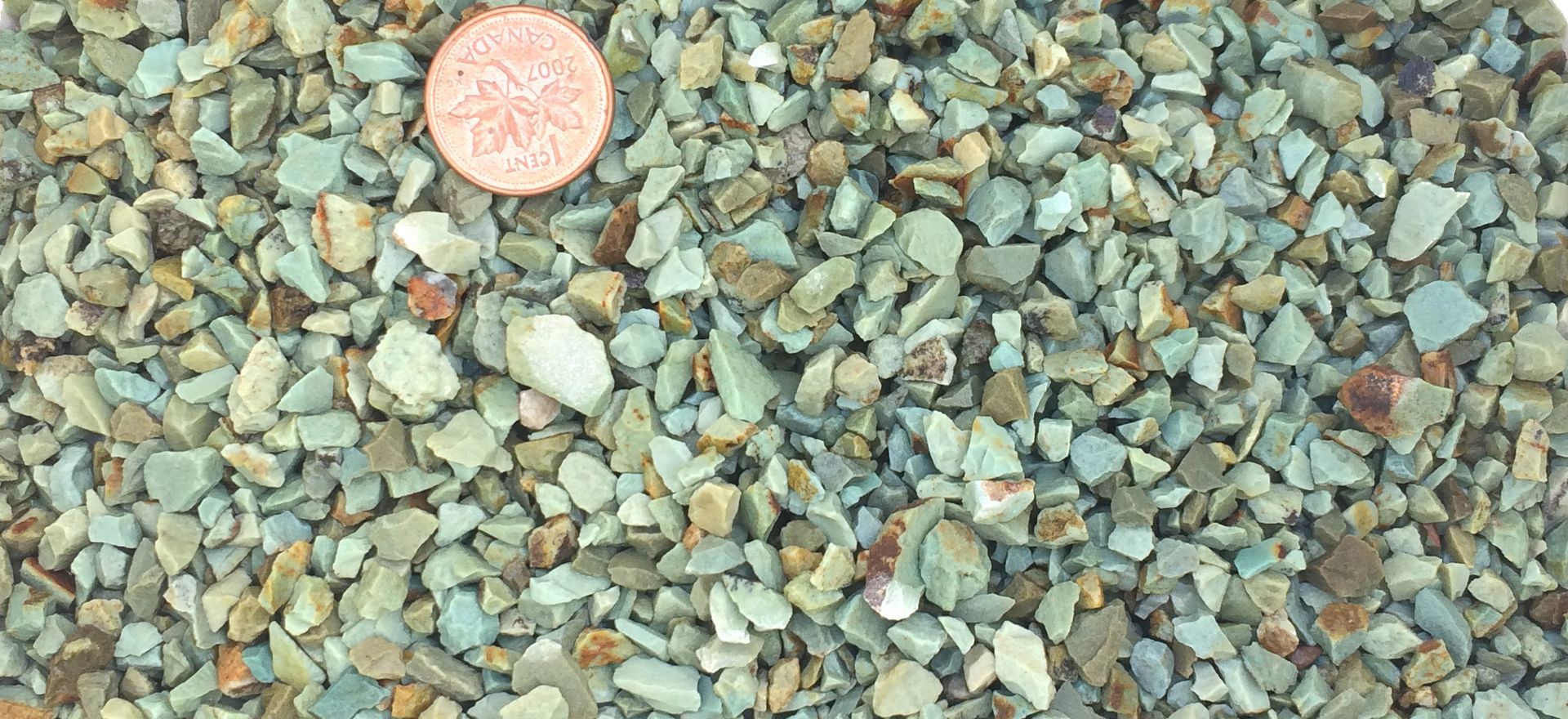
BONSAI SOIL FOR ZONE 3
Soil doesn’t attract the same interest in the bonsai beginner as pruning, wiring or carving. Eventually, when beginners see the effect of a proper soil mix, an odd obsession with soil will begin to develop.
The soil used in bonsai is much more coarse than for other potted plants. It must allow water to flow freely between the particles. Fresh water forces the toxic carbon dioxide released by the roots out of the pot. As the water freely flows out of the pot, beneficial oxygen is drawn in from the soil surface and the drainage layer. This regular exchange of water and oxygen is critical to good bonsai health.
Another benefit of using a coarse soil mix in our hot Manitoba summer is that it will dry more quickly and allow daily watering during the summer months with minimal risk of root rot.
The soil in a bonsai pot must perform several functions.
It anchors the tree to provide stability
It retains moisture
It supplies food to the roots
It supplies oxygen to the roots
It protects the roots form sudden changes in temperatures
POTTING MEDIA
In Manitoba, to accomplish these requirements, we use mixtures made up of pumice, zeolite, crushed quartzite (poultry grit), and Sea Soil™.
For many years, the classic mix of one-third crushed quartzite, one-third Turface, and one-third bark chips was recommended by many and used by most club members. This recipe has now been improved to yield better results.
Pumice, a natural, porous, volcanic rock from British Columbia, has replaced Turface, a fired clay that absorbs water, slowly releasing it as water vapour. Pumice has two advantages. It absorbs and releases nutrients when the plant is fertilized and watered. A plant potted in Turface can contain dry or water-logged pockets, too little or too much water. Pumice’s wicking action helps distribute moisture more evenly to all parts of the soil mass. In wetter regions like Canada’s West Coast, many use 100% pumice for their bonsai.
Sea Soil™, an odourless, organic compost made of fish and tree bark, has replaced bark chips. Unlike freshly chipped tree bark, this product is already broken down, and its nutrients are readily available. For those who want a more forgiving mix, this optional additive will provide some nutrients and more moisture retention.
Zeolite, or diatomaceous earth, is another porous mineral component and is presently imported in bulk for the club. Locally available versions designed to absorb oil spills are too small in particle size. Zeolite also absorbs and releases water and nutrients well. It replaces akadama to some degree (a well-known Japanese component that is difficult to obtain here.)
Actual soil mixtures for specific species may vary from pure pumice for some conifers, to pumice and zeolite, with or without quartzite and sea soil, for deciduous trees, often in equal parts. Pumice and sea soil mixes have also been used for trees liking more moisture and organic matter, being careful to not over-water. The club is constantly seeking new sources of materials and new options to consider.
Beginners must not be tempted to use the dense, black loamy earth in which the trees in the yard are growing. For bonsai, this soil quickly becomes compacted, starving the roots of oxygen and making it difficult to water the plant properly. A porous soil mix allows for daily watering in the heat of summer and allows ample exchange of vital gases.
SIFTING
Before using any soil ingredient, you must sift out the very fine and the very coarse particles. Anything so fine that it falls through a sifting screen of 2 mm (window screen size mesh) must be discarded as it will compact and prevent water from draining quickly. Particles larger than 8 mm that will not pass through an 8 mm screen can be used at the bottom layer of the pot. Use particles between 4 and 8 mm to pot your bonsai.
Experienced bonsai artists often adjust the ratios and particle size of components to better suit trees with more specific requirements. Various sources may recommend other components or somewhat different proportions because they are in different climates or have different materials available. The above ingredients work well in Manitoba!
The seasoned bonsai grower can adapt the watering and feeding program to suit their lifestyle, the species, the potting mix, and the amount of rainfall in Southern Manitoba.
At club meetings, beginners may hear members discussing other mixes, such as akadama, shale, lava rock, or river sand.
To learn more about bonsai soil mixes, here are two articles to help you with your research:
Life Without Turface
By Michael Hagedorn of Crataegus Bonsai. Michael explains in detail why pumice is better than Turface. Equally interesting are the comments on the topic from many bonsai growers.





